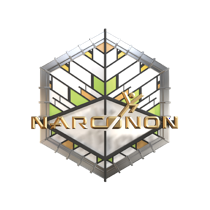Street Opiates or Doctor Prescribed Opiates: What’s the Difference?

It is fairly well understood that drug abuse and addiction is a major problem across our country, but what may not be well understood is the fact that some of the most significant drug abuse and addiction problems stem from prescription drugs. These are drug substances that individuals received through the recommendation of a trusted medical professional, that they believe can help them with some difficulty they have encountered in their life. They are unlikely to view this medication as potentially extremely dangerous. However, the fact is that while the opiate drug heroin is one of the most potent, addictive and dangerous drug substances currently in existence, prescription opiates are not much better. Furthermore, while there are roughly half a million Americans who are addicted to heroin, there are more than two million Americans who are addicted to prescription painkillers.
Street Opiates vs. Doctor Prescribed Opiates
Both street opiates and opiates prescribed by a doctor are, obviously, derived from the same source: opium. That means that they are very similar in that they are both highly potent, addictive and dangerous for the individual taking them. Furthermore, many individuals who begin with the use and abuse of prescription opiates often find that it is necessary to switch to street opiates in order to continue feeding their addiction habits, largely because street opiates can be more easily obtained and are more affordable than prescription opiates. Prescription painkillers that contain hydrocodone and oxycodone have an opium base, just like heroin does, which means they can have very similar effects on the body. Opiates like these will attach to opiate receptors in the brain and nervous system in order to effectively block the body’s pain signals and bring about a happy, relaxed feeling. For many individuals, it is both the pain relief and the pleasant sensations that will drive them to continue using opiates—whether prescription or from the street. Unfortunately, these desirable effects do come at a price—because the relaxation one experiences is actually a literal relaxation of vital body functions, including respiration and heart rate, which can be fatal.
Even when an individual is able to control their street or prescription opiate use so as to not overdose, they can experience constipation, restlessness, and insomnia. Furthermore, if an individual attempts to withdraw from opiate use, they can experience a wide range of unpleasant, uncomfortable and sometimes painful withdrawal symptoms, including agitation, severe sweating and dehydration, abdominal cramping, nausea, diarrhea, vomiting, anxiety, muscle cramps and aches, insomnia, and more.
This means that both street opiates and prescription opiates can yield the same active ingredients, effects, and withdrawal symptoms. However, they are not entirely identical in all ways—mostly because of how they are used. Street opiates like heroin are often used through intravenous injection, which is extremely dangerous in and of itself because one must then consider needle cleanliness, the injection site used and much more. A dirty needle or improper injection site, for example, can rapidly lead to infection or disease. In comparison, prescription opiates are normally taken orally in pill form, which eliminates the dangers inherent in using needles and selecting injection sites. Furthermore, injecting the drug results in an immediate, rushing high, while taking it orally, better controls the high. With a heroin injection, the individual can achieve a drug high so rapidly that they can be overwhelmed, their vision altered and their ability to function impaired. Prescription opiate pills are designed to be time-released drugs, giving needed and desired relief over an extended period of time rather than shocking the body all at once.
Another point to consider is that while the ingredients, effects and withdrawal symptoms are similar to street opiates and prescription opiates, prescription opiates are highly regulated and street opiates are not. When an individual purchases street opiates they honestly have no idea what they are getting, and whether the drug they think they are getting is actually pure or has been laced with other drugs which makes its use even more dangerous. Even the street names for opiates can make it difficult to tell what’s really in them—kickers, killers, TNT, Captain Cody, China White, monkey, fizzies, biscuits, smack, footballs, hell dust, black stuff, Chinese Tobacco, and easing powder—are just a few of the various opiate street names that can be used by various dealers to describe opiate drugs and opiate drug mixes.
The Bottom Line
The bottom line is that whether street opiate or prescription opiate, these drugs are incredibly dangerous and are often consumed by individuals who simply don’t understand the inherent high risk of addiction. Obviously, the safest solution is to avoid opiate use altogether, by finding safer alternatives to pain relief. However, if you or someone you know is suffering from drug abuse or addiction to either street opiates or prescription opiates, call Narconon Arrowhead at (877) 508-8151 for immediate help.


